Arlington, Virginia.
Some of my readers are aware of my interest in aviation and membership in the Civil Air Patrol (CAP), a voluntary organization that is an auxiliary to the United States Air Force. Due to a change in my position within the organization, I was asked to accompany our state commander, (known officially in the organization as the North Dakota Wing Commander) to Washington DC for the winter national conference. The North Dakota delegation also included the North Dakota Wing Director of Cadet Programs, Captain Justin McDowell. Normally it’s a full agenda for the trip, but as it turned out this year, the wing commanders met in private session for one morning leaving myself, my wife and the Director of Cadet Programs available to visit Arlington National Cemetery. The opening image is a view of Arlington House from the grave site of John Kennedy, his wife and two children who died early in life.
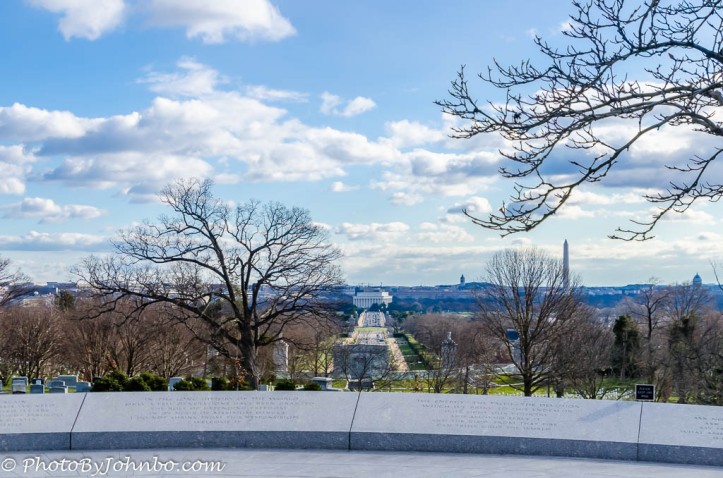 The cemetery happened to be only three stops on the metro from our conference hotel, an easy and inexpensive journey. One of our first stops in our walk through the cemetery was the Kennedy gravesite. Turning 180 degrees from the view of Arlington House, the former home of Robert E. Lee, the Lincoln Memorial and the Washington Monument dominate the view. Fortunately the trees in late February have not yet started their spring growth which would have changed the view considerably.
The cemetery happened to be only three stops on the metro from our conference hotel, an easy and inexpensive journey. One of our first stops in our walk through the cemetery was the Kennedy gravesite. Turning 180 degrees from the view of Arlington House, the former home of Robert E. Lee, the Lincoln Memorial and the Washington Monument dominate the view. Fortunately the trees in late February have not yet started their spring growth which would have changed the view considerably.
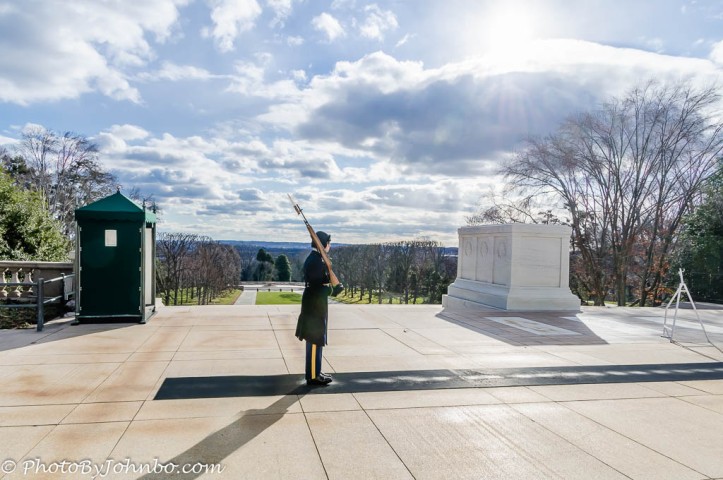 We arrived shortly after 8 AM and knew we couldn’t spend a lot of time before heading to the Tomb of the Unknowns where every hour they change the guard. We wanted to be there for the 9 AM ceremony. As luck would have it, we spotted a small group of CAP members in their dress blue Air Force style uniforms. We guessed they were also headed toward the Tomb of the Unknowns. We followed them and soon found ourselves standing with a small crowd of observers awaiting the top of the hour. We didn’t have long to wait.
We arrived shortly after 8 AM and knew we couldn’t spend a lot of time before heading to the Tomb of the Unknowns where every hour they change the guard. We wanted to be there for the 9 AM ceremony. As luck would have it, we spotted a small group of CAP members in their dress blue Air Force style uniforms. We guessed they were also headed toward the Tomb of the Unknowns. We followed them and soon found ourselves standing with a small crowd of observers awaiting the top of the hour. We didn’t have long to wait.
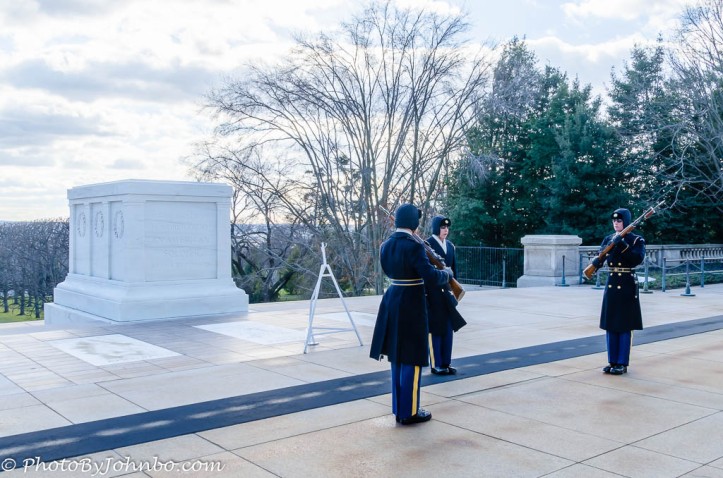 The guard commander smartly approached the crowd and described the ceremony that would take place and then took his position to begin the ceremony. It is a ceremony done with extreme respect and precision. The dedication of the guards who deem it an honor to serve in this capacity is well-known. The duty is performed 24 hours a day in all kinds of weather. In the building, a small collection of items is on display at the entrance to the tomb guard quarters. On the wall is a plaque that is titled “The Sentinel’s Creed”.
The guard commander smartly approached the crowd and described the ceremony that would take place and then took his position to begin the ceremony. It is a ceremony done with extreme respect and precision. The dedication of the guards who deem it an honor to serve in this capacity is well-known. The duty is performed 24 hours a day in all kinds of weather. In the building, a small collection of items is on display at the entrance to the tomb guard quarters. On the wall is a plaque that is titled “The Sentinel’s Creed”.
The plaque reads:
My dedication to this sacred duty is total and whole-hearted. In the responsibility bestowed on me never will I falter. And with dignity and perseverance my standard will remain perfection through the years of diligence and praise and the discomfort of the elements, I will walk my tour in humble reverence to the best of my ability.
It is he who commands the respect I protect. His bravery that made us so proud. Surrounded by well meaning crowds by day. Alone in the thoughtful peace of night. This soldier will in honored glory rest under my eternal vigilance.
– Simon 1971.
After the changing of the guard, there were two groups who presented wreaths. Groups and individuals can go online and request to present a wreath, however less than 50% of those applications are accepted. The first group to present appeared to be middle-school students, girls who are attending an academy. The were dressed in a school uniform. It happened that the group of CAP members who were on their way to the tomb were members of an Ohio CAP squadron who applied for, and were accepted to present a wreath.
 After the ceremony, we had an opportunity to visit with the CAP contingent and found out about some of the details on applying for and being accepted to make a wreath presentation. Captain McDowell and I were happy to provide copies of the photos we captured at the ceremony to them as they had no one there take any photos for them.
After the ceremony, we had an opportunity to visit with the CAP contingent and found out about some of the details on applying for and being accepted to make a wreath presentation. Captain McDowell and I were happy to provide copies of the photos we captured at the ceremony to them as they had no one there take any photos for them.
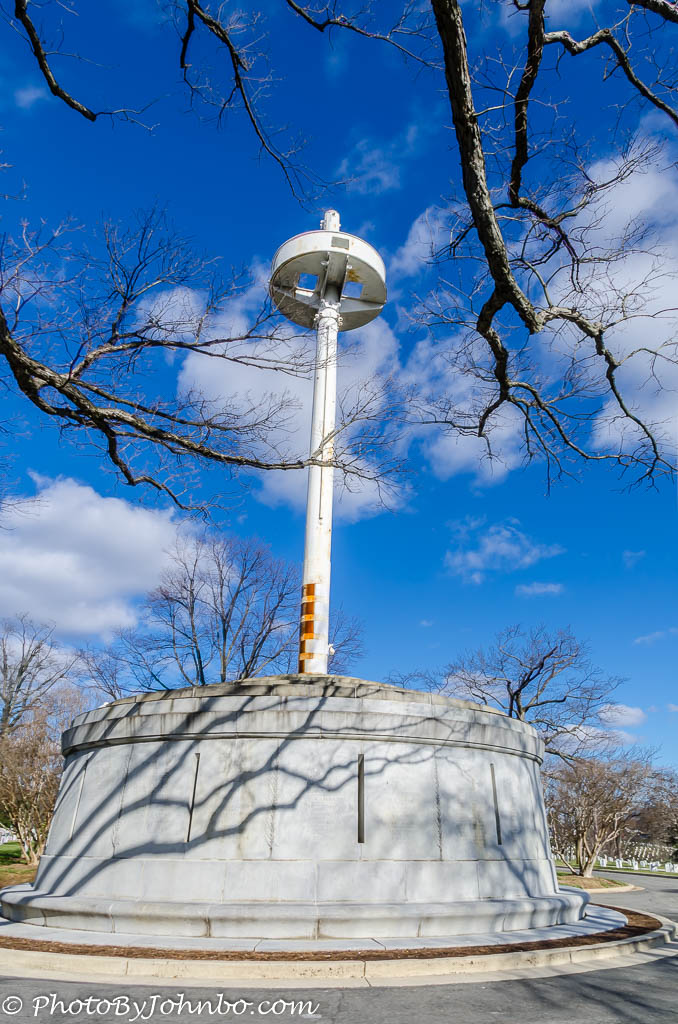 Near the Tomb of the Unknowns is the monument for the Battleship Maine, lost by explosion of unknown origin while in the harbor at Havana, Cuba on February 15, 1898. Over 300 officers and enlisted perished. Of the bodies recovered, 165 were finally interred in Arlington Cemetery, most remains were unidentified. The monument is the main mast of the battleship. The nearby anchor is not from the Maine, but is of the same design.
Near the Tomb of the Unknowns is the monument for the Battleship Maine, lost by explosion of unknown origin while in the harbor at Havana, Cuba on February 15, 1898. Over 300 officers and enlisted perished. Of the bodies recovered, 165 were finally interred in Arlington Cemetery, most remains were unidentified. The monument is the main mast of the battleship. The nearby anchor is not from the Maine, but is of the same design.
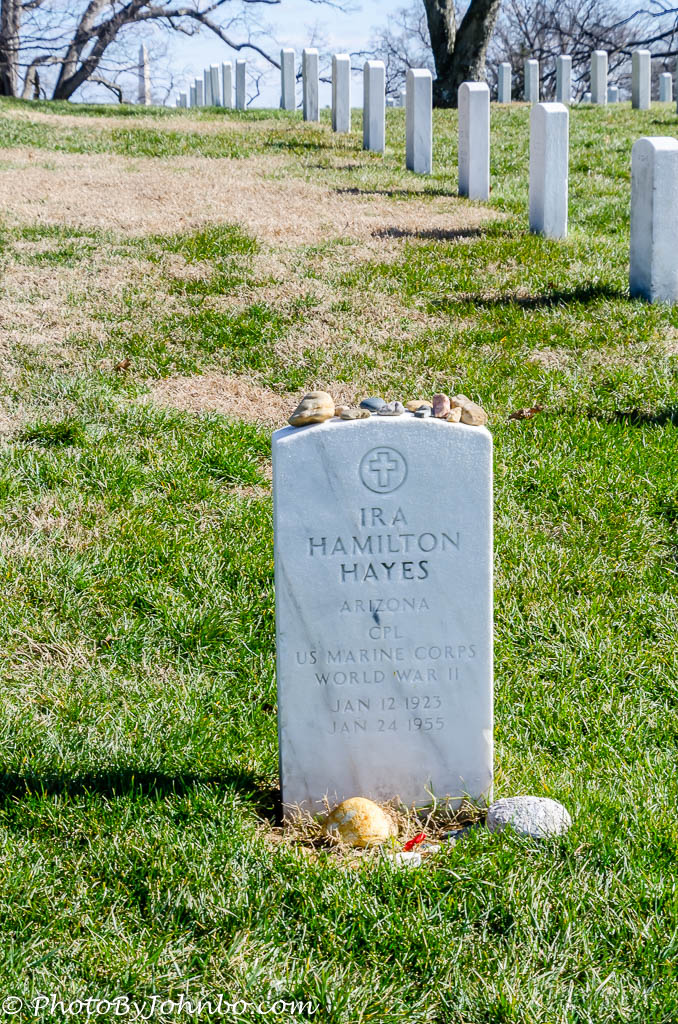 Of the over four hundred-thousand people interred at Arlington, I chose one to feature. Ira Hamilton Hayes was a war hero in every sense of the word. A Native American of the Akimel O’odham, (Pima) tribe, Corporal Hayes received the Commendation Ribbon with “V” combat device, Presidential Unit Citation with one star (for his participation at Iwo Jima), Asiatic-Pacific Campaign Medal with four stars (for Vella Lavella, Bougainville, Consolidation of the Northern Solomons and Iwo Jima), the American Campaign Medal, and the World War II Victory Medal. Corporal Hayes was one of the survivors of the battle of Iwo Jima who raised the flag atop Mount Suribuchi. He died on January 24, 1955 at Bapchule, Arizona. In 1964, Johnny Cash released “The Ballad of Ira Hayes”. You can view a YouTube video of the song here.
Of the over four hundred-thousand people interred at Arlington, I chose one to feature. Ira Hamilton Hayes was a war hero in every sense of the word. A Native American of the Akimel O’odham, (Pima) tribe, Corporal Hayes received the Commendation Ribbon with “V” combat device, Presidential Unit Citation with one star (for his participation at Iwo Jima), Asiatic-Pacific Campaign Medal with four stars (for Vella Lavella, Bougainville, Consolidation of the Northern Solomons and Iwo Jima), the American Campaign Medal, and the World War II Victory Medal. Corporal Hayes was one of the survivors of the battle of Iwo Jima who raised the flag atop Mount Suribuchi. He died on January 24, 1955 at Bapchule, Arizona. In 1964, Johnny Cash released “The Ballad of Ira Hayes”. You can view a YouTube video of the song here.
Arlington’s history as a resting place for our veterans and their families had its roots in the civil war. The story is much to long to be told here. The estate of Robert E. Lee and his wife, Mary Custis Lee would become the hallowed ground that it is today. An article in the Smithsonian Magazine from November 2009 tells that story here. The gallery of images below were captured at Arlington Cemetery on February 26, 2016. Click on an image to enlarge it and to scroll through the gallery.
John Steiner

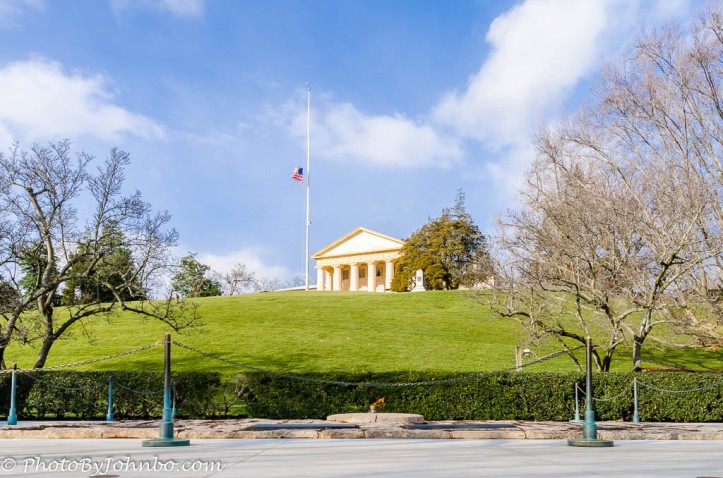
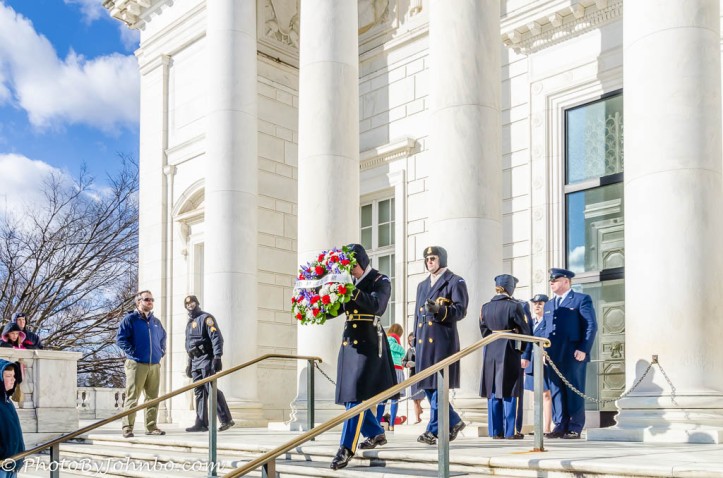
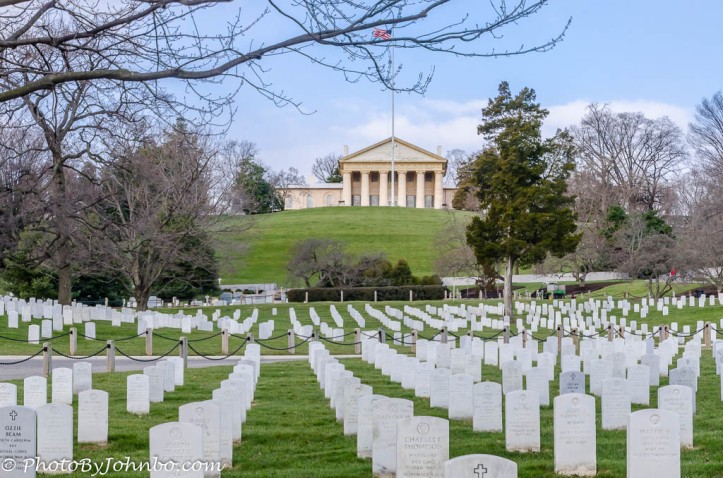














Great images! Arlington is one place we’ve yet to get to. Thanks for taking me on a journey of someplace I’ve never been. 🙂
You will be glad you went there. It’s a very moving and emotional place!